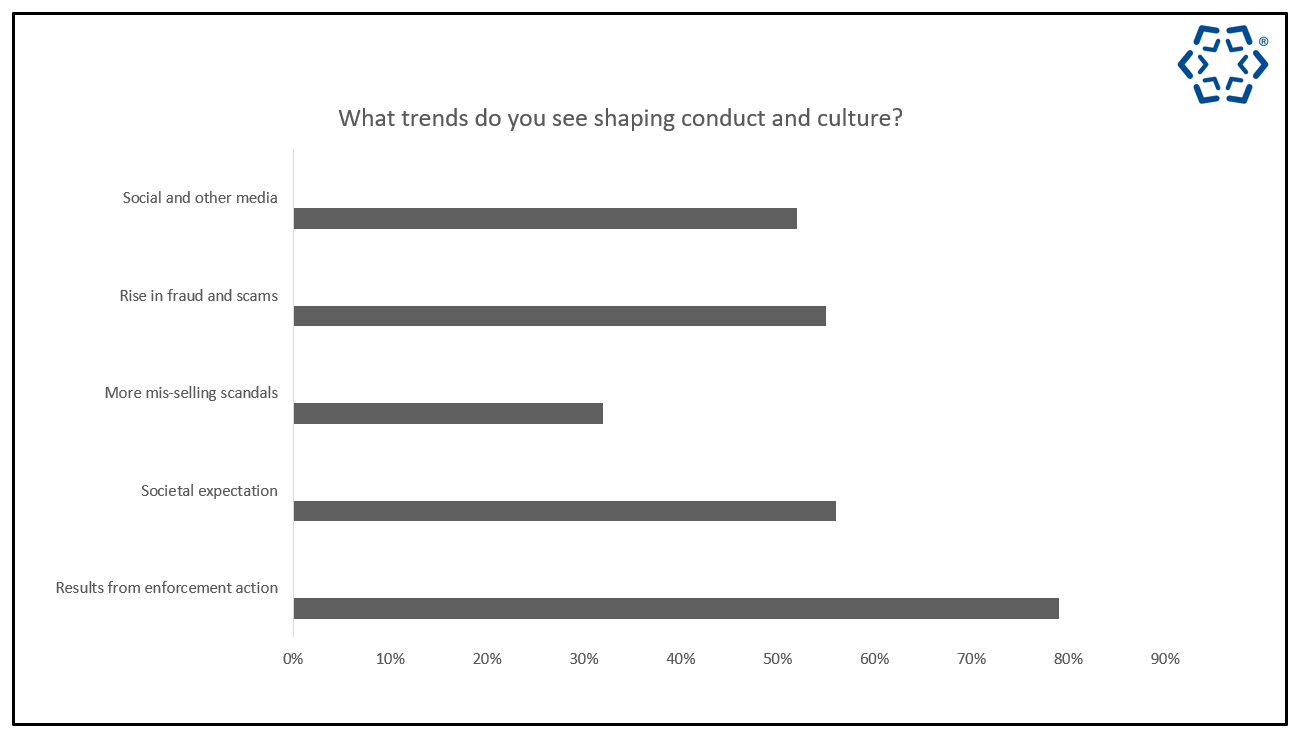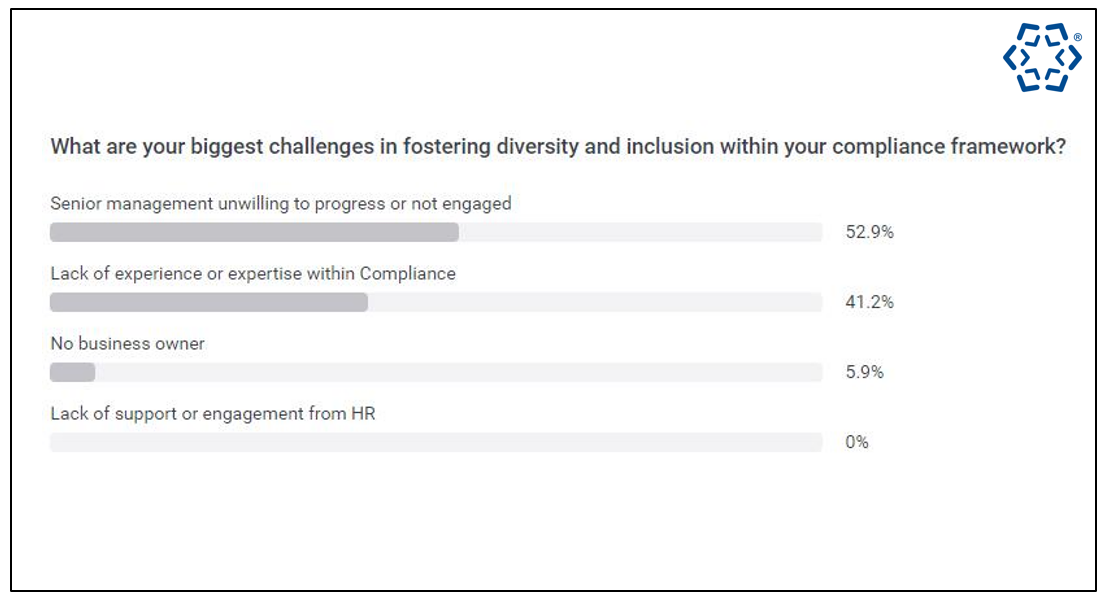Establishing a compliance-driven culture is vital for a firm's success. We examined the intricacies of building and maintaining this type of culture.
We are entering the final year of the FCA's three year strategy, and firms are at a place where they need to have a clear understanding of the baseline and culture. The FCA is a campaigning organisation - its agenda is centred around trying to drive change in multiple ways across the industry and promote financial inclusion.
Despite the FCA's intentions, it is not easy to change culture, and many firms have become frustrated with middle management's impact on driving change. It is becoming increasingly clear that middle management gets squeezed between the tone from the top and other employees.
.png?width=600&height=450&name=MicrosoftTeams-image%20(50).png)
Main discussion points
In our recent breakfast briefing at Thames Suite - Tower Suites, we were joined by Leaman Crellin CEO Katharine Leaman and PwC partner David Kenmir to examine building and maintaining a culture of ethical conduct within the framework of regulatory compliance.
Together, we discussed the challenges and pressures from the regulator and what a compliance-driven culture looks like. The main discussion points include:
- Examining the difference between cultural and behavioural issues
- Diversity and inclusion - the value of fostering diversity in a firm
- Clarifying the role of individuals within the SMCR framework
- Exploring the importance of training for a diverse, compliant culture
- Future predictions on conduct and culture
Key takeaways
The session inspired thought provoking conversation on where cultural problems stem from and how they can be alleviated.
The influence of senior management cannot be underestimated. We addressed calling out behavioural issues and how the tone from the top changes mindsets and behaviour in the entire organisation.
We identified three key takeaways that the discussion focused on.
1. Understanding organisational conduct & culture
The panel examined how an organisation's structure can influence the conduct of the company:
- By setting conduct and culture goals, the organisation knows what they want to achieve and can identify individuals who are standing in the path of these goals.
- Leadership play a critical role in shaping and maintaining a compliant culture, and it's important to get the tone right from the top.
- Employees are at the grassroots level, so they can see what is really going whereas management might be out of touch and think they are getting it right when they are, in fact, missing the mark.
- From the poll results, it was evident that the results from enforcement actions are seen as the trend that will influence future conduct and culture, indicating firms will use these outcomes to inform their compliance strategies.

2. Recognising the value of diversity & inclusion
We explored the value of diversity and inclusion in an organisation where the following points were raised:
- There is a structural problem in that there are not enough people in the country for every firm to reach its diversity goals, so a marginal amount of conscious bias in recruitment might be an avenue to explore.
- Diversity and inclusion enhance a compliant culture - at a board level, there needs to be voices in the room of individuals from various backgrounds, ethnic groups and genders to avoid making decisions based on thinking one way.
- Senior management's unwillingness to progress and engage was one of the biggest challenges identified in fostering diversity and inclusion within an organisation's compliance framework.

3. Empowering roles through training & awareness
We unpacked the role of positions such as Consumer Duty champion within the SMCR framework and how training can have an impact on establishing a compliance culture.
- The FCA doesn't focus on rules; it focuses on outcomes which impact individuals coming into the UK who grapple with how the regulator thinks, so there needs to be training to instil this culture in an organisation.
- It's important to identify someone in the first line and let them champion an area such as Consumer Duty.
- Don't opt people into the Senior Management & Certification Regime (SMCR) if you don't have to - there is a lot of responsibility that comes with this, and certification can be burdensome on organisations.
- Someone needs to take ownership of the culture in an organisation. The business heads are best suited - the Chairman or possibly the CEO. Even better is someone one step removed from the business, such as a Non-executive Director (NED) to give an independent view of the business and challenge the status quo.
We also have additional free resources such as e-learning modules, microlearning modules, and more.
Explore our collectionWritten by: Samantha Martin-Woodgate
Samantha has worked in business growth for over two decades. She has experience building brand awareness and personable and creditable relationships across the C-Suite. Her passion is people and creating opportunities for them to connect, collaborate and share knowledge. Sam is currently building the Skillcast community, one relationship at a time.




